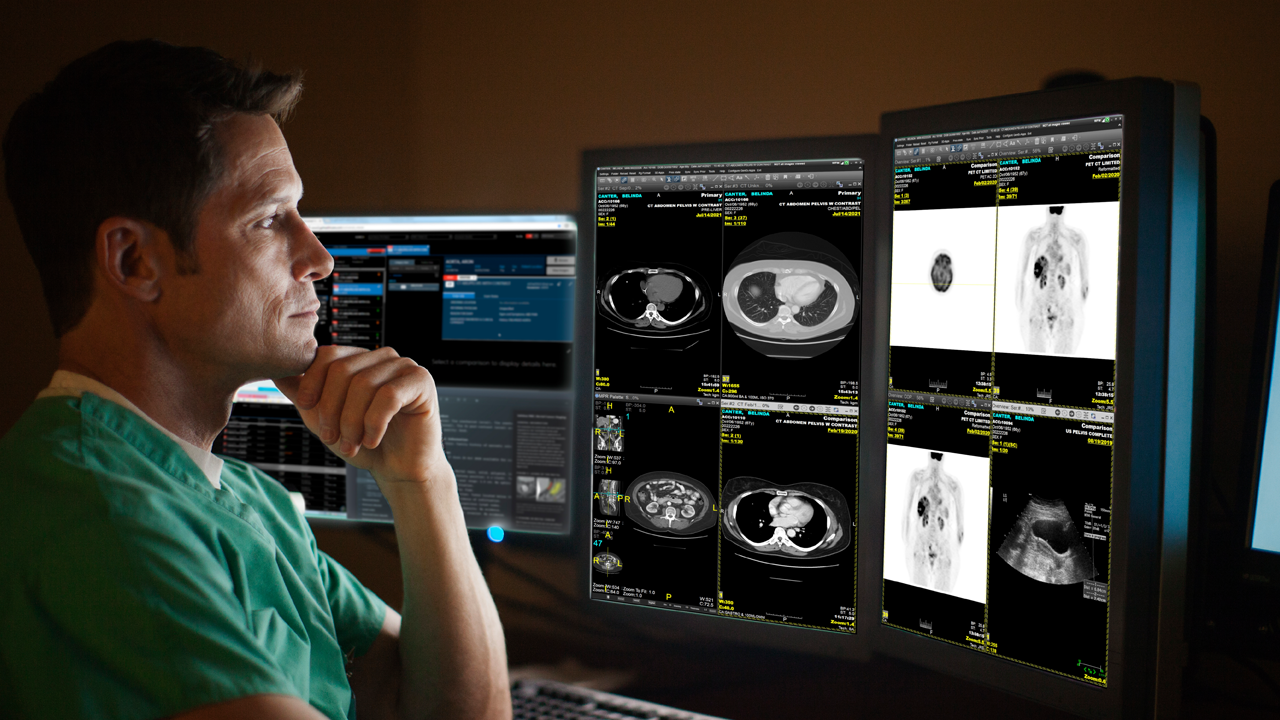In a modern radiology practice, every day is different. In addition to a different mix of radiologists reading, widely fluctuating volumes, and varying case mix, other unscheduled and often unexpected events that commonly occur in healthcare add to the complexity. With so much variability, it can be difficult or even impossible to assure the workforce is rightsized to the daily case workload. These complex, changing dynamics can also make it difficult to distribute work across the group in a fair and efficient manner. Without an intelligent and dynamic workload management system in place, these conditions can decrease overall productivity and push the enterprise out of balance.
To combat these issues, many radiology practices are seeking solutions that enable optimal workload distribution. They need a dynamic, adaptive tool that can increase radiologist productivity while also creating a less stressful work environment.
Current workload management challenges
Radiology worklists are challenging to manage. Defining the workflow rules required to cover all clinical and contractual scenarios is a daunting and sometimes never ending task for practice administrators. Huge, complex exam lists, extreme variability in study complexity, widely varying radiologists’ skillsets, contractual service level agreements (SLAs), and variable location-specific service requirements make it difficult for radiologists and administrators to optimize the exam workload across their workforce. Furthermore, legacy “smart” worklist solutions can become bogged down by their own cumbersome rules engines. Without the right technology to support fair and efficient workload distribution, radiology teams can be plagued with:
-
Lost time and productivity – Radiologists can lose more than 15 minutes of daily productivity when they need to choose which case they’re going to read next. That loss of productivity balloons to concerning levels across a large practice.
-
List anxiety – Adding the responsibility of worklist management and case selection to overburdened radiologists creates additional stress.
-
Reactive staffing – Without a clear understanding of the precise skillsets of the active radiologist workforce and its capacity, workload surges are handled reactively and less effectively.
-
Unbalanced workload distribution – Consistent mismatches of case assignments and radiologists result in unfair and unproductive workload distribution.
-
Cherry-picking – has a tremendous negative effect on overall practice performance and radiologist morale.
The need for proactive management
While managing worklists in real time is possible, the reality is that real time can be too late - too late to assure radiologist staffing properly matches the workload, or that the workload has been distributed to the right radiologist at the right time. Therefore, for optimal productivity, worklists must be managed proactively. And that requires an intelligent workload management solution that includes predictive analytics.
Fair and highly optimized workload distribution
To assist its radiology customers with addressing these critical workload and workforce optimization needs, GE Healthcare recently announced the availability of Quantum Imaging’s intelligent workload management solution as part of the GE Healthcare PACS solutions.[1]
Quantum’s new technology was developed to meet the imperative for a predictive tool that can manage today’s radiology workload complexity. This new workload and workforce automation solution quantifies the time it will take the active workforce to complete the current workload by calculating the relative speed of the active radiologists and the estimated read times of all exams in the workload. As a result, when combined with GE Healthcare’s PACS solutions, it can help fairly measure and manage the productivity of radiologists and their workload ensuring optimal practice performance and service level compliance.
By using predictive analytics, the workload and workforce automation solution enables these key improvements:
-
More accurate predictions about the workload
-
Optimization of radiologists’ workflow across the entire enterprise
-
Real-time assessment of the active radiologist workforce and their skillsets
-
Balancing the workload against exam reading capacity
-
More fair and optimal distribution of cases given to each radiologist
As a result, the enterprise can intelligently prioritize and dynamically assign exams to reach equilibrium. These gains in efficiency and equity also help to decrease radiologist burnout.
Intelligent workload management solution delivers measurable benefits
GE Healthcare’s new intelligent workforce management was released for its PACS solutions, integrated with Helix® Radiology Performance Suite, and developed by Q-IT, LLC, a wholly owned subsidiary of Quantum Imaging & Therapeutic Associates. This new technology delivers the power to help radiologists keep pace with growing workloads and increasingly complex studies and work environments.
As a result of using the new intelligent workload management system, Quantum Imaging & Therapeutic Associates has seen a rapid and sustained 15-22% increase in radiologist productivity[2] which equates to several million dollars annually.
Additional benefits they’ve realized include[3]:
-
16.7% (from 18 min to 15 min) improvement in super STAT turnaround times (TAT)
-
20.5% (from 32.2 in to 25.6 min) improvement in STAT/ED TAT
-
14.8% (from 147.2 to 125.4 min average) improvement on inpatient TAT on exams distributed through the solution
-
The percent of SLA exceptions across the practice for ED, inpatient and outpatient exams has been cut by more than half, which helps to drive efficiency and lower cost
Is your radiology practice looking for technology that can help increase productivity, reduce turnaround times, and boost morale? Discover how GE Healthcare’s Intelligent Workload Manager can help more equitably manage radiologists’ work distribution while decreasing burnout.
REFERENCES
[1] Based on Helix® Balance from Q-IT LLC.
[2] Based on internal studies by Quantum Imaging & Therapeutic Associates, Inc.
[3] Based on internal studies by Quantum Imaging & Therapeutic Associates, Inc.

